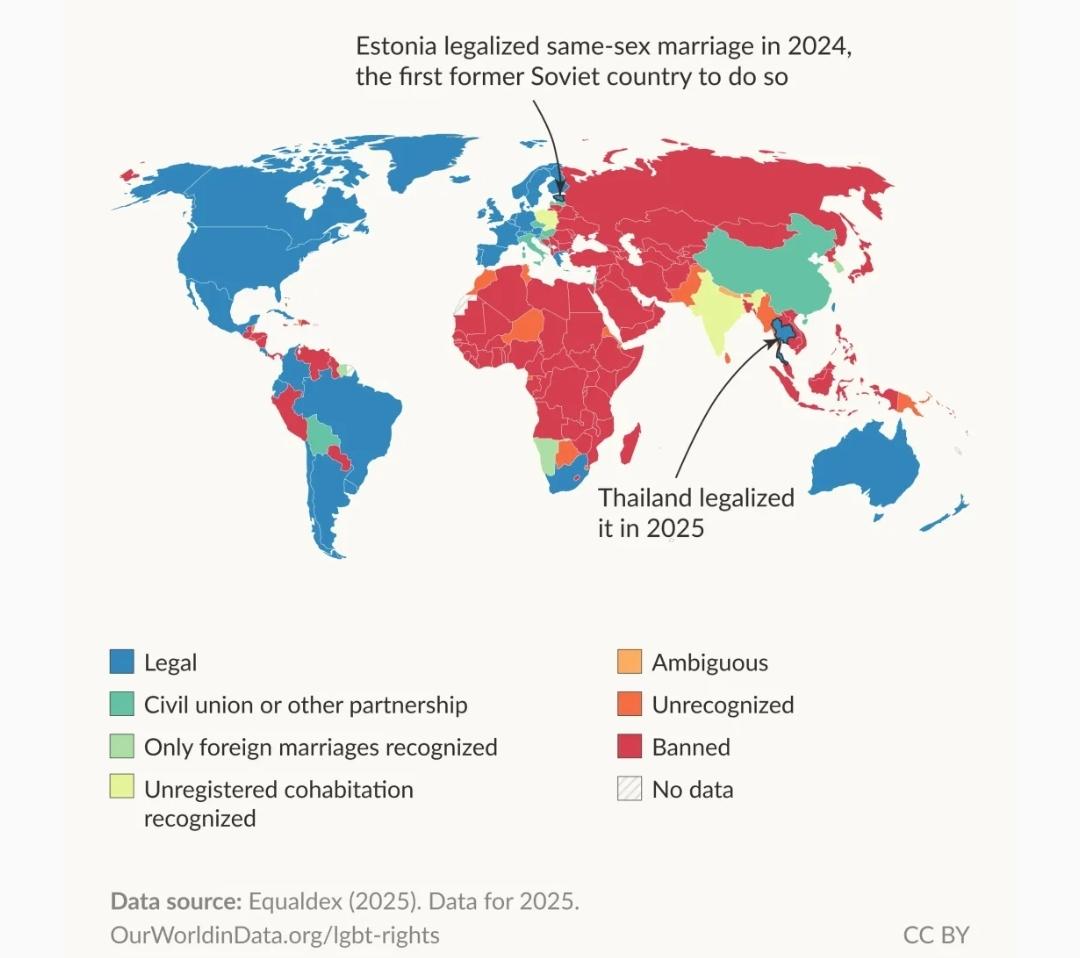Same Sex Marriage Status Worldwide Map


Marcus Rodriguez
Historical Geography Expert
Marcus Rodriguez specializes in historical cartography and geographic data analysis. With a background in both history and geography, he brings unique...
Geographic Analysis
What This Map Shows\nThis map provides a comprehensive overview of the legal status of same-sex marriage across the globe. It visually represents which countries have legalized same-sex marriage, which have civil unions or registered partnerships, and which prohibit it altogether. Such visualizations are not just informative; they highlight the progress and setbacks in the fight for LGBTQ+ rights worldwide, allowing viewers to quickly grasp the current landscape of same-sex marriage legality.
Deep Dive into Same-Sex Marriage\nSame-sex marriage has become a pivotal issue in the global human rights movement. Historically, the fight for marriage equality has been intertwined with broader struggles for LGBTQ+ rights, often facing significant opposition from various cultural, religious, and political spheres.
As of October 2023, over 30 countries have legalized same-sex marriage, establishing it as a fundamental right. This shift began gaining momentum in the late 20th century, with the Netherlands being the first country to legalize same-sex marriage in 2001. Since then, countries such as Argentina, Spain, Canada, and more recently, Taiwan and Costa Rica, have followed suit, reflecting changing societal attitudes toward LGBTQ+ relationships.
Interestingly, the success of same-sex marriage legalization often correlates with broader human rights protections in a country. For instance, nations in Western Europe and parts of North America tend to have robust legal frameworks supporting LGBTQ+ rights, resulting in a higher likelihood of marriage equality. Conversely, countries in regions such as the Middle East and parts of Africa have seen harsher restrictions, often criminalizing homosexuality entirely.
What’s fascinating is that the movement for same-sex marriage does not exist in a vacuum. It is influenced by various factors, including public opinion, political leadership, and the presence of LGBTQ+ advocacy groups. For example, in countries like Ireland and Australia, referendums were held, showcasing a democratic approach to legalizing same-sex marriage, which garnered significant public support.
Statistics reveal the impact of legalizing same-sex marriage on the LGBTQ+ community as well. Studies have shown that after legalization, there is a marked decrease in suicide rates and mental health issues among LGBTQ+ individuals, as acceptance begins to permeate society. Furthermore, economic benefits have been observed, as countries that embrace marriage equality often see an influx of tourism and spending related to weddings and events.
Regional Analysis\nWhen we examine the map regionally, distinct patterns emerge. In Western Europe, countries like Germany, France, and the UK have embraced same-sex marriage, often reflecting more progressive social norms. However, just a few borders away, nations such as Poland and Hungary have enacted laws that undermine LGBTQ+ rights, highlighting a stark contrast within the European Union.
In North America, Canada has been a pioneer in same-sex marriage since 2005, while the United States saw a significant legal battle that culminated in the Supreme Court's ruling in 2015, affirming the right to marry for same-sex couples. This creates a notable divide in how LGBTQ+ rights are perceived and enforced across the continent.
Latin America has also seen significant progress. Countries like Mexico recognize same-sex marriage in various states, and landmark decisions in Brazil have set legal precedents for marriage equality. However, neighboring countries like Honduras and El Salvador remain staunchly opposed, reflecting deep-rooted cultural apprehensions.
In contrast, Africa exhibits the most resistance to same-sex marriage, with many nations retaining colonial-era laws that criminalize homosexuality. Countries like South Africa stand out as exceptions, having legalized same-sex marriage in 2006, but the continent as a whole shows a troubling trend of discrimination and violence against LGBTQ+ individuals.
Significance and Impact\nUnderstanding the status of same-sex marriage worldwide is crucial for multiple reasons. It not only sheds light on human rights progress but also reflects the cultural, political, and social dynamics within different societies. The map serves as a barometer for global attitudes toward LGBTQ+ issues, providing insight into where advocacy efforts need to be focused and where success stories can inspire change.
Moreover, as societal norms continue to evolve, the map will likely undergo further changes, with nations reconsidering their stances on same-sex marriage. Current trends indicate a growing acceptance, especially among younger generations, suggesting that the future may hold even more positive developments for LGBTQ+ rights globally.
Ultimately, this map isn’t just a static representation; it’s a living document that captures the ongoing journey toward equality and justice for all individuals, regardless of their sexual orientation. By closely monitoring these changes, we can better understand the interconnectedness of global human rights and the ongoing struggle for dignity and acceptance in diverse cultural landscapes.
Visualization Details
- Published
- October 17, 2025
- Views
- 36
Comments
Loading comments...